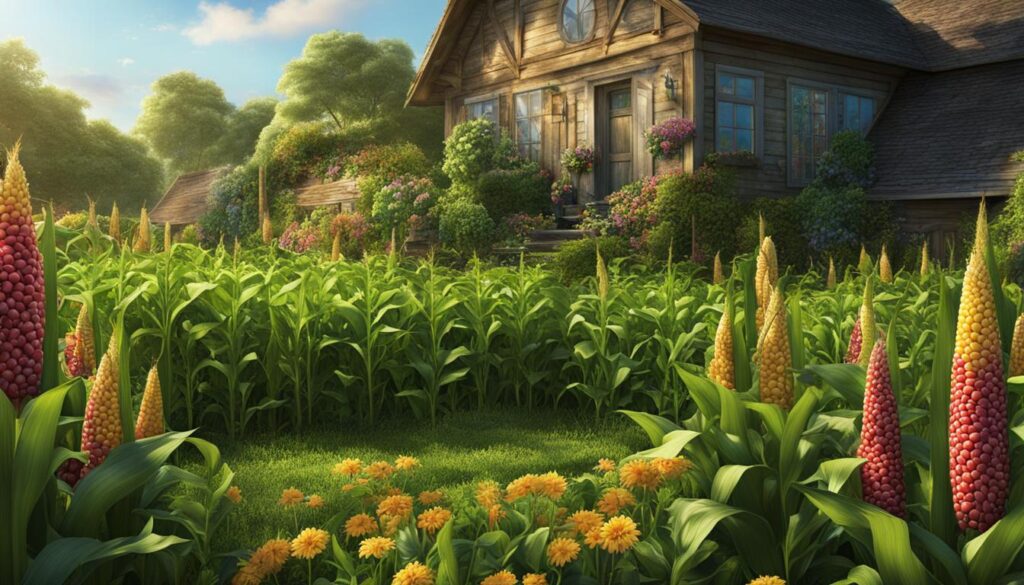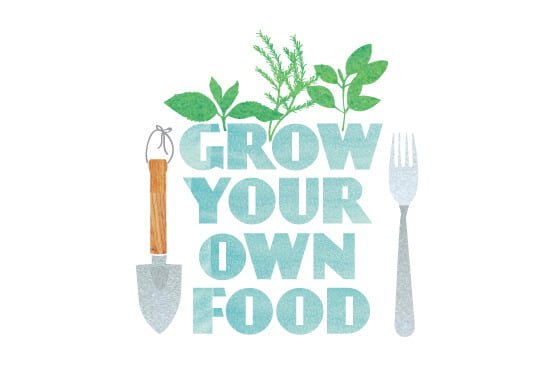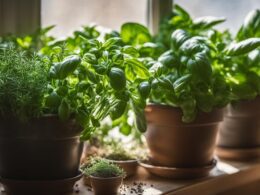Prior to European settlement in North America, Native American groups practiced a planting method called the three sisters garden, which involved growing corn, beans, and squash together. This companion planting technique maximized the benefits of each crop and provided a balanced diet for the Native American tribes. The cornstalks acted as a trellis for the beans, which had the ability to fix nitrogen in the soil, benefiting the corn plants. The sprawling squash plants provided shade, prevented weed growth, and deterred pests. Additionally, when corn and beans are eaten together, they provide a complete protein source.
Post Summary:- Growing corn and beans together in a three sisters garden is a sustainable and holistic approach to gardening.
- The three crops – corn, beans, and squash – provide numerous benefits when planted together.
- The cornstalks act as a trellis for the beans, while the beans fix nitrogen in the soil and the squash plants provide shade and deter pests.
- The combination of corn and beans also provides a complete protein source.
- By following the principles of a three sisters garden, gardeners can create a flourishing and productive garden.
The Benefits of the Three Sisters Garden
The three sisters garden offers numerous advantages when it comes to growing corn and beans together. By utilizing this companion planting technique, you can create a symbiotic relationship between these crops, resulting in a more productive and sustainable garden.
One of the main benefits of the three sisters garden is the structural support provided by the cornstalks for the climbing beans. This support helps to minimize wind damage and allows the beans to reach their full potential. In return, the beans fix nitrogen in the soil, enhancing the overall fertility and health of the garden.
The sprawling growth habit of squash plants in the three sisters garden also contributes to its benefits. The large leaves of the squash plants act as a living mulch, suppressing weeds and conserving soil moisture. Additionally, the presence of squash plants helps to deter pests. This natural pest control reduces the reliance on synthetic fertilizers and pesticides, making the garden more environmentally friendly.
Overall, the three sisters garden provides a holistic approach to gardening, maximizing yield while minimizing the need for chemical inputs. By harnessing the benefits of the cornstalks, beans, and squash, you can create a thriving and balanced ecosystem in your own backyard.
Choosing the Right Varieties for a Three Sisters Garden
When it comes to creating a successful Three Sisters Garden, selecting the right varieties of corn, beans, and squash is essential. Each crop plays a unique role in this companion planting system, and choosing suitable varieties will ensure optimal growth and productivity in your garden.
Choosing Corn Varieties
When selecting corn varieties for a Three Sisters Garden, consider the height and growth habit of the plants. It is recommended to choose corn varieties that grow to at least six feet in height. This height provides sturdy support for the climbing bean vines and prevents them from overwhelming the cornstalks. Both sweet corn and grain corn can be used in this planting method, so you can select the type that best suits your culinary preferences.
Choosing Bean Varieties
For the bean component of the Three Sisters Garden, it is best to choose pole bean varieties. Pole beans have long vines that can climb the cornstalks, creating a mutually beneficial relationship. Traditional dried bean varieties or green bean varieties can be used, depending on whether you plan to harvest the beans when they are young and tender or allow them to mature and dry on the vine.
Choosing Squash Varieties
When selecting squash varieties for a Three Sisters Garden, consider the growth habit of the plants. Winter squash varieties such as butternut or acorn squash are suitable choices, as they have a sprawling growth habit that will cover the ground and provide shade for the soil. Avoid summer squash varieties that grow in clumps, as they may compete with the corn and beans for space and resources.
By choosing the right varieties for your Three Sisters Garden, you can ensure a harmonious and productive garden that maximizes the benefits of companion planting.
| Crop | Recommended Varieties | Features |
|---|---|---|
| Corn | Tall varieties (at least 6 feet) | Provides support for beans |
| Beans | Pole bean varieties | Can climb cornstalks |
| Squash | Winter squash varieties | Has sprawling growth habit |
How to Plant a Three Sisters Garden
Planting a three sisters garden involves a strategic arrangement of corn, beans, and squash to maximize their growth potential and create a symbiotic relationship between the crops. Follow these steps to effectively grow corn and beans together:
- Prepare the soil: Start by clearing the planting area of any weeds or debris. Loosen the soil and amend it with organic matter to improve drainage and fertility.
- Build mounds or hills: Create circular mounds of soil with a flat planting area on top. Each mound should be about 3 to 4 feet in diameter and spaced 4 to 5 feet apart.
- Plant the corn: Make a circle of holes on top of the mound, approximately 1 to 2 feet apart. Plant one or two corn seeds in each hole, about 1 inch deep.
- Plant the beans: Inside the circle of corn, make a smaller circle of holes, spacing them about 4 to 6 inches apart. Plant one or two bean seeds in each hole, about 1 inch deep. Ensure that the beans are positioned towards the cornstalks for support.
- Plant the squash: Outside the circle of corn, make another circle of holes near the edge of the mound, spacing them about 3 to 4 feet apart. Plant one or two squash seeds in each hole, about 1 inch deep.
- Water and maintain: After planting, water the garden thoroughly and ensure that the soil remains consistently moist. Regularly monitor for pests and diseases, and promptly address any issues.
By following these steps, you can create a thriving three sisters garden that will benefit each crop and provide a bountiful harvest. Remember to adjust the planting arrangement and spacing based on your specific climate, corn and bean varieties, and garden size.
“A three sisters garden is a harmonious collaboration between corn, beans, and squash. By planting them together using the right techniques, these crops can support and nourish each other, resulting in a healthy and productive garden.”
Now that you know how to arrange and plant a three sisters garden, it’s time to put your knowledge into practice. In the next section, we’ll explore the traditional and historical significance of the three sisters garden and the cultural importance it holds for Native American tribes.
Traditional and Historical Significance of the Three Sisters Garden
The Native American three sisters garden holds immense cultural and historical significance. It represents the deep connection between corn, beans, and squash in the lives of Native American tribes. The planting and harvesting of these crops were accompanied by ceremonies and rituals, honoring the vital role they played in sustaining their communities and cultures.
For Native Americans, corn and beans were considered sacred crops, providing nourishment and sustenance. The combination of corn and beans in the three sisters garden also holds exceptional nutritional value. When consumed together, corn and beans create a complete protein source, essential for a balanced diet. This knowledge was passed down through generations, ensuring the tribes’ physical and cultural well-being.
“The three sisters garden represents the interdependence of nature and humanity. It reflects the wisdom of Native American agricultural practices, promoting sustainability and harmony with the Earth.”
The historical significance of companion planting in the three sisters garden extends beyond the Native American tribes. It serves as a reminder of the profound knowledge and ingenuity of indigenous agricultural practices. Today, embracing the tradition of the three sisters garden allows us to reconnect with nature, cultivate sustainable gardens, and appreciate the wisdom of those who came before us.

The table below provides a comparison of the cultural importance of corn and beans in Native American tribes:
| Tribe | Corn | Beans |
|---|---|---|
| Pueblo | Corn was believed to be the physical manifestation of the Earth Mother. | Beans represented fertility and abundance. |
| Cherokee | The Creator gave corn as a gift to the people, symbolizing their dependence on the land. | Beans were considered a sacred plant and represented the spirit of the people. |
| Iroquois | Corn symbolized the Sky Woman, who descended to Earth and gave birth to the first humans. | Beans were considered the “sisters” of corn, offering support and balance. |
- The three sisters garden is deeply rooted in the cultural heritage of Native American tribes.
- Corn, beans, and squash were revered for their nutritional value and the balance they provided in Native American diets.
- Companion planting in the three sisters garden highlights the significance of sustainable agricultural practices.
Tips for Success with a Three Sisters Garden
Successfully growing corn and beans together in a three sisters garden requires careful planning and attention to detail. To help you maximize your yield and overcome common challenges, here are some valuable tips:
1. Choose the Right Varieties:
Select corn varieties that grow to at least six feet in height to provide sturdy support for the climbing bean vines. Opt for pole bean varieties that can easily twine around the cornstalks. For squash, choose varieties with a sprawling growth habit, such as butternut or acorn squash.
2. Timing is Key:
Plant your three sisters garden when the soil has warmed up and there is no risk of frost. This is typically in late spring or early summer. Ensure that your corn has a head start by planting it a few weeks before the beans and squash. This way, it will be tall and sturdy enough to support the beans when they start to climb.
3. Proper Spacing:
Give your plants ample space to grow and thrive. Plant corn seeds about 12 inches apart in a circle, leaving enough room for the bean seeds to be planted in the center. Space the bean seeds about 4 inches apart within the circle. Plant squash seeds outside the circle, near the edge of the bed, with a spacing of about 24 inches between each plant.
4. Regular Maintenance:
Monitor your three sisters garden regularly and provide the necessary care. Water your plants regularly, ensuring that the soil remains consistently moist but not waterlogged. Weed the garden regularly to prevent competition for nutrients and resources. Consider adding companion plants like sunflowers or amaranth to attract beneficial insects and deter pests.
By following these tips, you’ll increase your chances of success in growing a thriving three sisters garden. Remember to adjust these recommendations based on your specific garden conditions and climate. With proper planning and care, you’ll be rewarded with a bountiful harvest of corn, beans, and squash.

Can I Grow Cucumbers and Broccoli Together in the Same Garden?
Cucumbers and broccoli can be successfully grown together in the same garden. These vegetables have different growth habits and nutrient requirements, allowing them to coexist without competing for resources. Moreover, planting them together can enhance biodiversity, deter pests, and maximize space utilization. Consider this approach if you’re interested in growing cucumbers and broccoli together.
Conclusion
Growing corn and beans together in a three sisters garden is a time-tested and sustainable method of companion planting. The synergistic relationship between these three crops provides numerous benefits, from improved soil fertility to a balanced and nutritious harvest. By following the principles of a three sisters garden and considering the right varieties, planting methods, and maintenance practices, you can create a flourishing and productive garden.
Embracing the tradition and wisdom of Native American agriculture, the three sisters garden offers a unique and rewarding gardening experience. Not only does it provide you with a bountiful harvest, but it also allows you to reconnect with nature and the rhythm of the seasons.
So why not bring the rich history and cultural significance of the three sisters garden into your own backyard? Join the ranks of Native American tribes and modern gardeners alike who have found success with this holistic approach to gardening. By embracing the three sisters, you will not only nurture a thriving garden but also foster a deep appreciation for the interconnectedness of nature.
FAQ
What is the three sisters garden?
The three sisters garden is a traditional planting method where corn, beans, and squash are grown together in a mutually beneficial way.
What are the benefits of a three sisters garden?
A three sisters garden provides support for the beans to climb, enhances soil fertility, suppresses weeds, conserves soil moisture, and reduces the need for synthetic fertilizers and pesticides.
What varieties should I choose for a three sisters garden?
It is recommended to choose corn varieties that grow to at least six feet in height, pole beans that can climb, and sprawling winter squash varieties.
How do I plant a three sisters garden?
Start by creating a circular mound of soil and planting the corn seeds in a circle on top. Then, plant the bean seeds inside the circle and the squash seeds outside near the edge of the bed.
What is the historical significance of the three sisters garden?
The three sisters garden holds cultural and historical significance to Native American tribes, symbolizing the interconnectedness of corn, beans, and squash in their diet and livelihood.
What tips can you provide for success with a three sisters garden?
Some tips for success include careful timing, spacing, and plant selection, regular watering and weeding, and incorporating companion plants to attract beneficial insects and deter pests.








